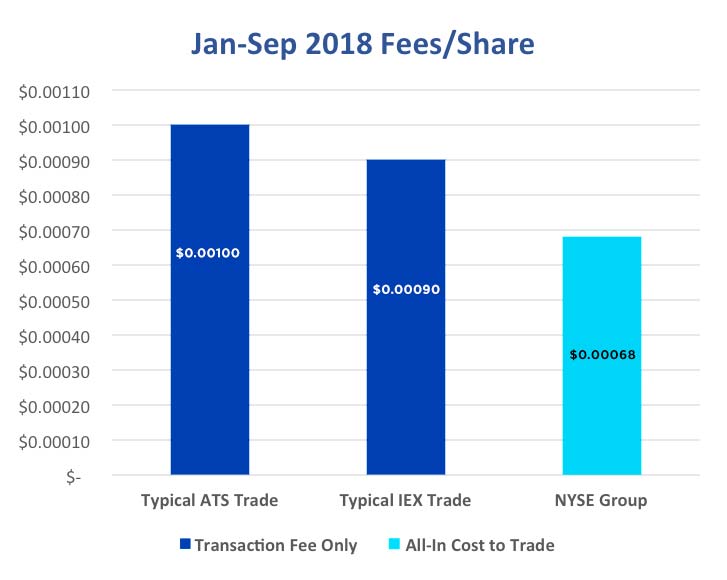November 7, 2018
At last month's hotly debated SEC market data roundtable, there was passionate discussion over both the nature of competition and fees charged for market data and market access. Some around the table, including IEX, chimed in that exchanges should only charge transaction fees. Market data and connectivity services, they said, should be provided for free.
We disagree. Exchanges are integrated enterprises that bring broad value through trading and technology services, but not all clients use every exchange offering. Allowing investors to order a la carte empowers each to select the blend of services they need. By contrast, charging high transaction fees but "giving away" data and connectivity is like requiring all diners to order a prix fixe tasting menu. Importantly, the current competitive market structure allows investors both choices. While the blend of exchange revenues has shifted from purely transactional to a mix of execution and technology, the overall costs on NYSE markets remain a bargain. In fact, the All-in Cost to Trade on NYSE Group exchanges is lower than on IEX or on many dark pools.
Keep your eyes on the prize: the All-in Cost to Trade on NYSE Group exchanges is less than $0.0007 per share. For our members, compare that to the $0.0009 transaction fee per share that IEX charges for most of its trading, and to a typical ATS fee of $0.0010 per share.
In fact, NYSE's competitiveness is understated in the comparison above as 1) the NYSE group calculation includes some fees associated with multiple NYSE markets, including NYSE Options, and 2) there are still datacenter and telecom fees associated with trading on IEX and dark pools, even if they are earned by unregulated datacenter and telecom providers instead of the trading venue operators.
Some market participants have understandably asked for a full breakdown of our calculation. We are happy to oblige, and stand ready to discuss any market participant's specific All-in Cost to Trade upon request.
- First, we calculate the sum of the following NYSE-related product lines to get total cost to trade:
- Net transaction fees (i.e., fees minus rebates)
- Proprietary market data fees
- Connectivity and co-location fees
- Logical order port fees
- Membership fees
- Second, we divide this sum by NYSE Group's executed volume
Applying separate fees for market data and connectivity allows members to choose the right bundle of products for their specific business. For example, members of multiple NYSE exchanges do not necessarily subscribe to the same market data products or use the same number of logical order ports on each venue. Some participants add and remove liquidity evenly, while others are skewed more toward one style of trading. Because market participants choose different trading, data and connectivity services, it's entirely possible that any given member's All-in Cost to Trade may be lower or higher than the average in our calculation.
What's your own All-in Cost to Trade?
Reach out to us at [email protected] to find out.
